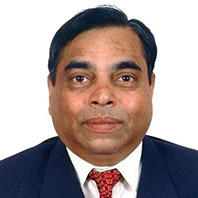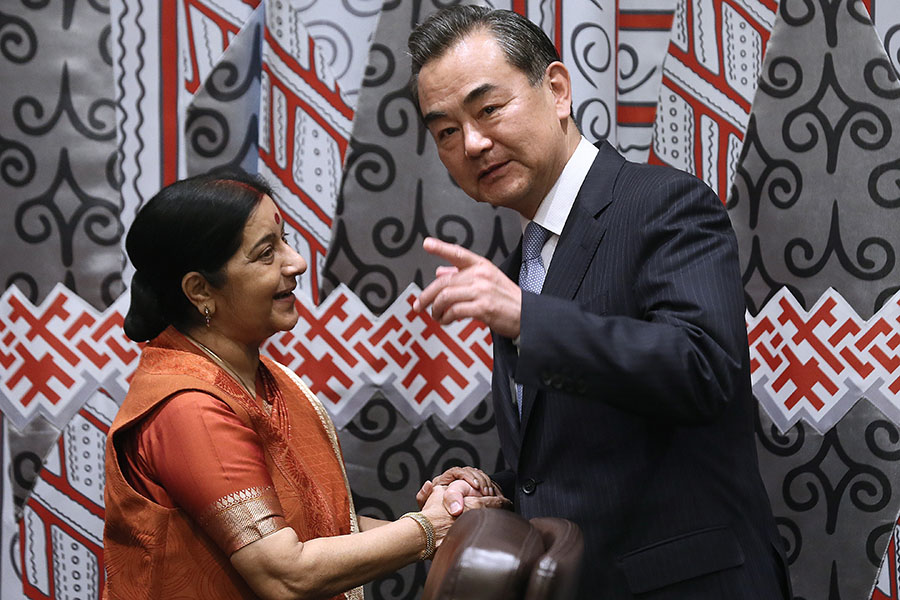India-China Relations - Looking to the Future


天造地设 –“Created by Heaven, constructed by Earth.” That is how the renowned Chinese Indologist, Professor Ji Xianlin, described India and China. Our two peoples have inherited a rich historical and cultural legacy – one which should remain ever present in our relationship. At the same time, we have to look to the future. Prime Minister Narendra Modi, during his visit to China in May 2015, observed that the “prospects of the 21st century becoming the Asian Century will depend in large measure on what India and China achieve individually and what we do together.” This imposes a particular responsibility on both countries to work together. It helps that both Prime Minister Modi and President Xi Jinping have agreed that the relationship should be viewed in a strategic, long-term and development perspective.
In the context of current and future needs, India and China have a rare synergy. There are commonalities in the problems faced by both countries – poverty elimination; ensuring balanced and equitable growth; governance and rule of law; demographics; catering to the needs and aspirations of a growing population; rural-urban migration; labor flows and employment; and environment and climate change. There is much that we can learn from each other’s efforts and best practices.
India and China are both seeking to transform their economies. Here again there is synergy. India has large financing needs. It has been estimated that India will require over US$ 1 trillion over the next 10 years just for infrastructure development. The recent growth trajectory in India, combined with new initiatives such as the “Make in India” programme, offer fruitful prospects for collaboration in manufacturing and technology transfer. China is well placed to meet Indian financing needs given its US$ 4 trillion foreign exchange reserves.
India offers a major market at a time when China has over-capacity and is looking for export markets. India has welcomed Chinese financing, investments and technology. During President Xi Jinping’s visit to India in September 2014, China expressed willingness to invest US$ 20 billion in India in the next five years in various infrastructure and industrial development projects. More can be done.
Working together
Mutual benefit – the fourth of the five principles of “Panchsheel” – underpins the logic of a more cooperative future. This intent has to manifest itself through actual, multi-faceted cooperation. It also entails support of the two peoples. Promoting people-to-people contacts for better mutual understanding is essential. In this context, the designation of 2015 as the “Visit India Year” and 2016 as the “Visit China Year” are positive steps. The opening of pilgrimages to Mount Kailash and Lake Mansarovar in Tibet, through the newly opened Nathu La route, is another constructive step, and has been warmly welcomed by the Indian public.
Several other decisions – such as initiating structured state-level and provincial-level exchanges; expanding sister-city relationships; boosting educational and cultural linkages; opening of new consulates; and bringing together thinks-tanks – are all advantageous initiatives. They might well take some time to materialize to their full extent. But when they do, they will surely contribute to expanding the scope of the bilateral relationship.
The synergy of economic cooperation does not, by itself, erase certain bitter legacies of the past. The leaders of both countries have stressed, repeatedly and publicly, the need for building trust and confidence. The unresolved border issue is emotive. There are sensitivities relating to cross-border terrorism affecting both countries. India has expressed its concerns regarding the route of the economic corridor that China is proposing to build in a neighboring country. India is still awaiting China’s endorsement of its candidature as a permanent member of the United Nations Security Council.
On the economic side, the continuing imbalance in bilateral trade that has left India with an unsustainable deficit that needs to be resolved. India looks forward to the early opening of the China market for Indian pharmaceuticals, information technology and entertainment. Efforts are required to manage differences and problems. Given political will, it should be possible to find mutually satisfactory resolutions for concerns of each side. This is essential for the realization of the ambitious goals that India and China have set for themselves.
Global partners
The larger picture that should engage the attention of both sides is the transition now underway at the global level to multi-polarity. Most projections suggest that by 2050 – perhaps even earlier – China will become the largest economy in the world, while India will be the third – if not second-largest economy. China and India are then expected to account for a third or more of the global economy. When that happens, it will be turning the clock back to the era that preceded the imperial and colonial advent into Asia.
India and China are already cooperative partners in regional and global economic institution-building. The BRICS-led New Development Bank – the inaugural meeting of which was held in Moscow on July 7, 2015 – and the Asian Infrastructure Investment Bank (AIIB) – which witnessed the signing of its articles of association on June 29, 2015 – are cases in point. The two banks, with authorized capital of US$ 100 billion each, signify the coming of age of emerging-market countries. They will serve the important purpose of meeting the infrastructure and other developmental financing needs of fellow developing countries. They also serve as essential building blocks in re-ordering the global financial system. At the global level, India and China have both contributed substantially to the International Monetary Fund’s crisis management fund.
The democratization of the international order is essential. The post-war system is no longer representative; hence, it lacks legitimacy. The diffusion of economic and financial power is already evident. The creation of groupings like the G-20 testifies to this reality. However, governance in global institutions is yet to reflect these evident – and emerging – new realities. India and China have a common interest in multi-polarity. That implies acceptance of each other as partners, rather than as competitors.
We need to ask ourselves: Can the 21st century become the Asian Century? Can the ‘Chinese Dream’ or the ‘Indian Dream’ become a reality without a partnership between India and China? If not, India and China will have to find ways of working together, and supporting each other.
I wish China-India Dialogue all success.
The writer, T. C. A. Rangachari, a former Indian Ambassador to France and Germany, dealt with India’s relations with China for over 15 years in the Ministry of External Affairs. A Mandarin-speaker, he ended his service in the Indian foreign office in 2006 and served as director of the Academy of International Studies at New Delhi’s Jamia Millia University until last year.
